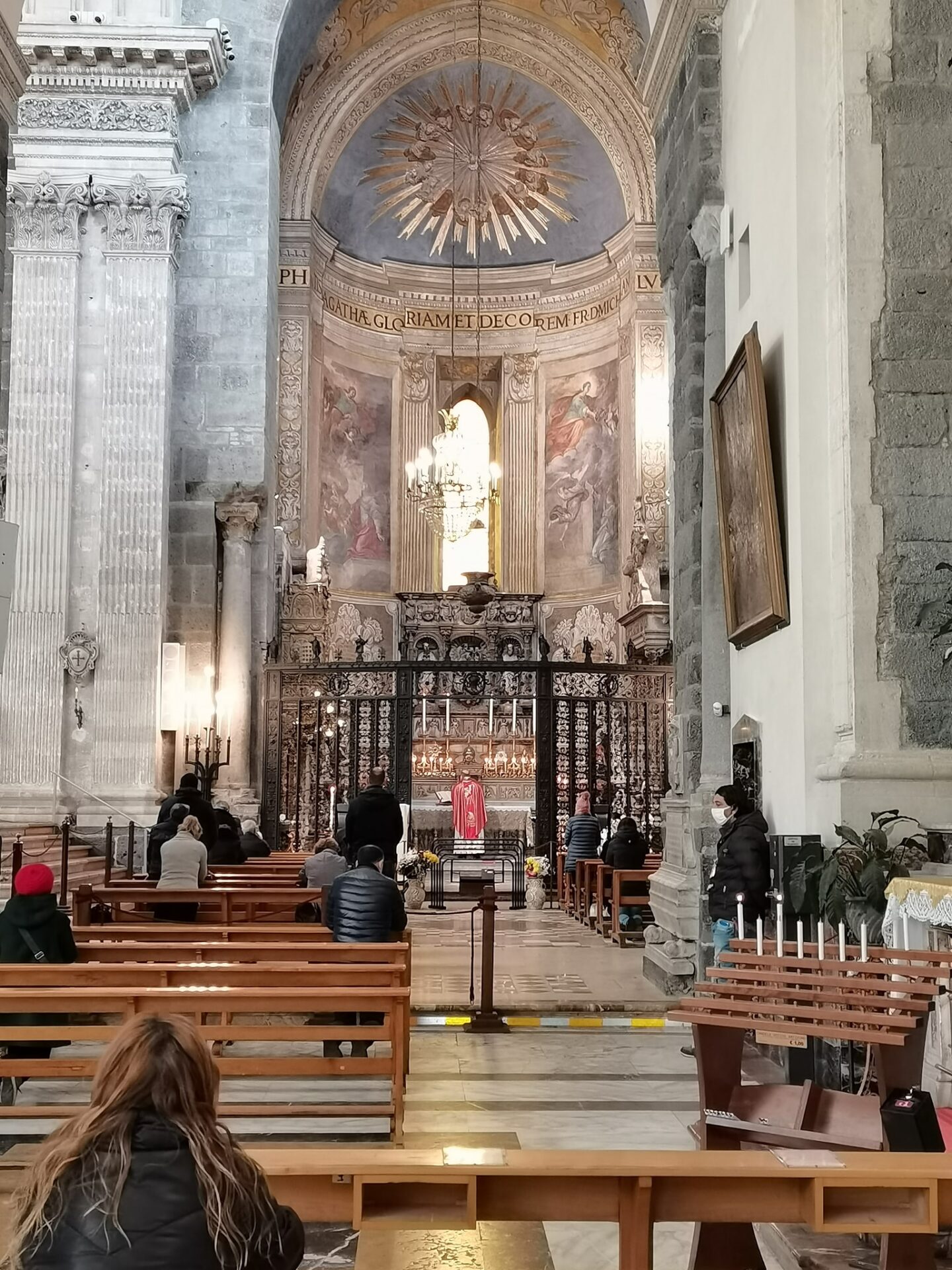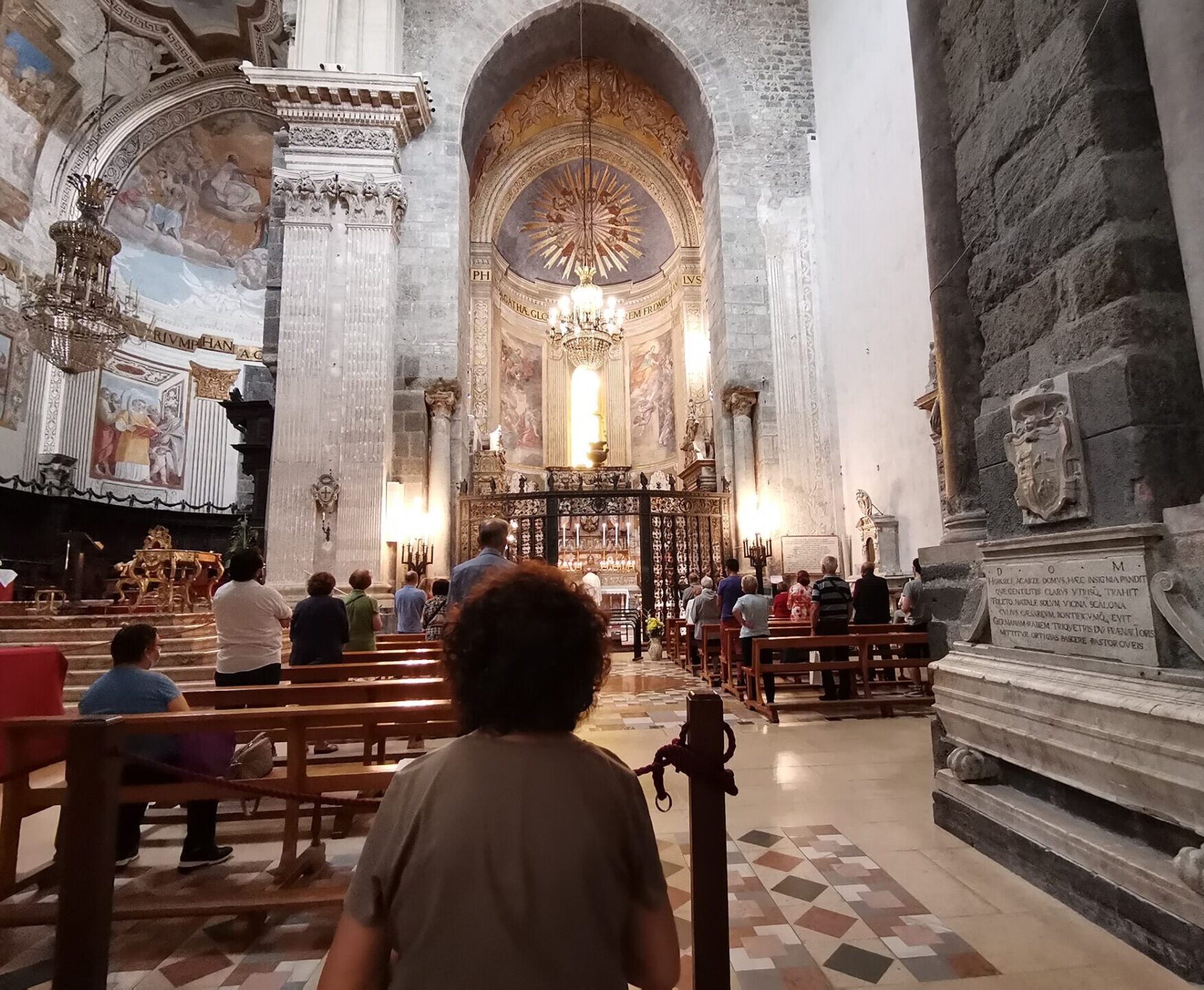Cattedrale of Sant’ Agata
Cattedrale of Sant’ Agata, is one of the places where it all started for this city. When the Normans and Roger I conquered the Emirate of Sicily they began the “re-Christianization” of the multicultural realm. In 1092, Pope Urban II, grateful for the end of the Muslim era granted the Norman King the right to reconstitute the diocese of Catania, entrusting the episcopal power to the Benedictine Abbot Ansgerio who was also appointed feudal lord of the vast territory of the diocese.
A new Cathedral rises in the heart of the ancient city, on the remains of an important thermal building of the second century accessible from the churchyard, and of which today only a quadrangular room remains in the center of which, carved into the floor, there is a small basin surrounded by four mighty pillars that support a cross vault decorated with stuccoes with floral motifs. King Roger had initially chosen the site of today’s church of Sant’Agata la Vetere where in 1091 he had founded the monastery of Sant’Agata with the adjoining abbey church.
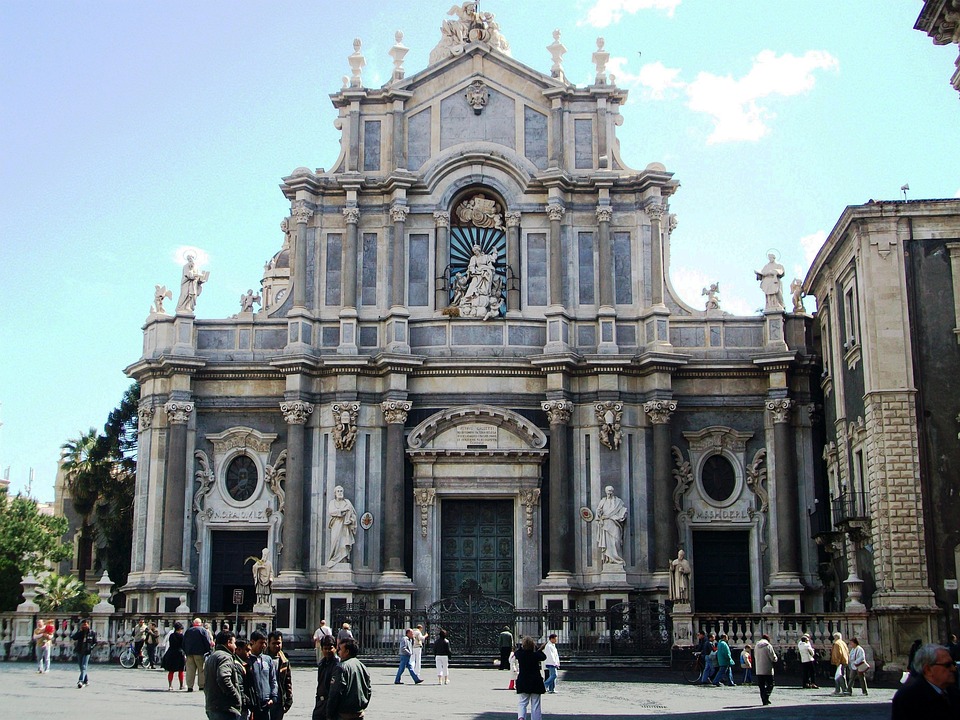
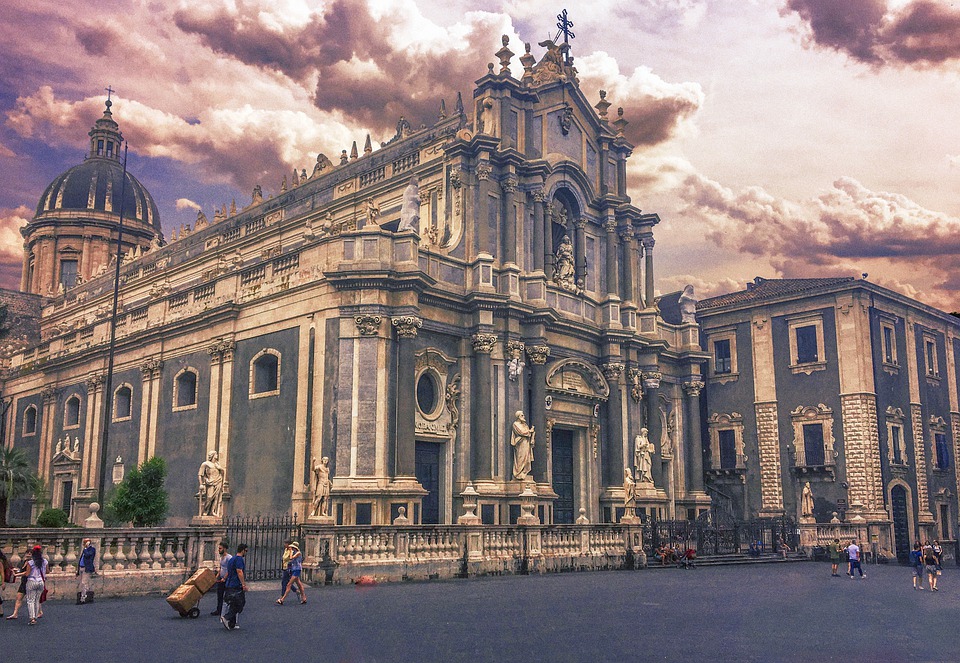
In 1094 he decided to transfer the bishopric to the heart of the city and the ancient Cathedral was called Sant’Agata la Vetere (i.e. the Old) to distinguish it from the new one that was rising. According to Roger, it was necessary to build the new church on the sea, with thick walls and in the form of an “Ecclesia munita” (church-fortress) not only to defend the city and the coast from external attacks, coming from the sea but above all because, with its forms, was a clear expression of the centralization of political and religious powers in the hands of the bishop.
1693 marks a decisive turning point in the architecture of the building following the terrible earthquake that struck eastern Sicily and that caused the almost destruction of the city. The Cathedral was hit by the collapse of the ancient bell tower, previously built next to the church, which led to the demolition of the naves, leaving only the apses and the transept intact.
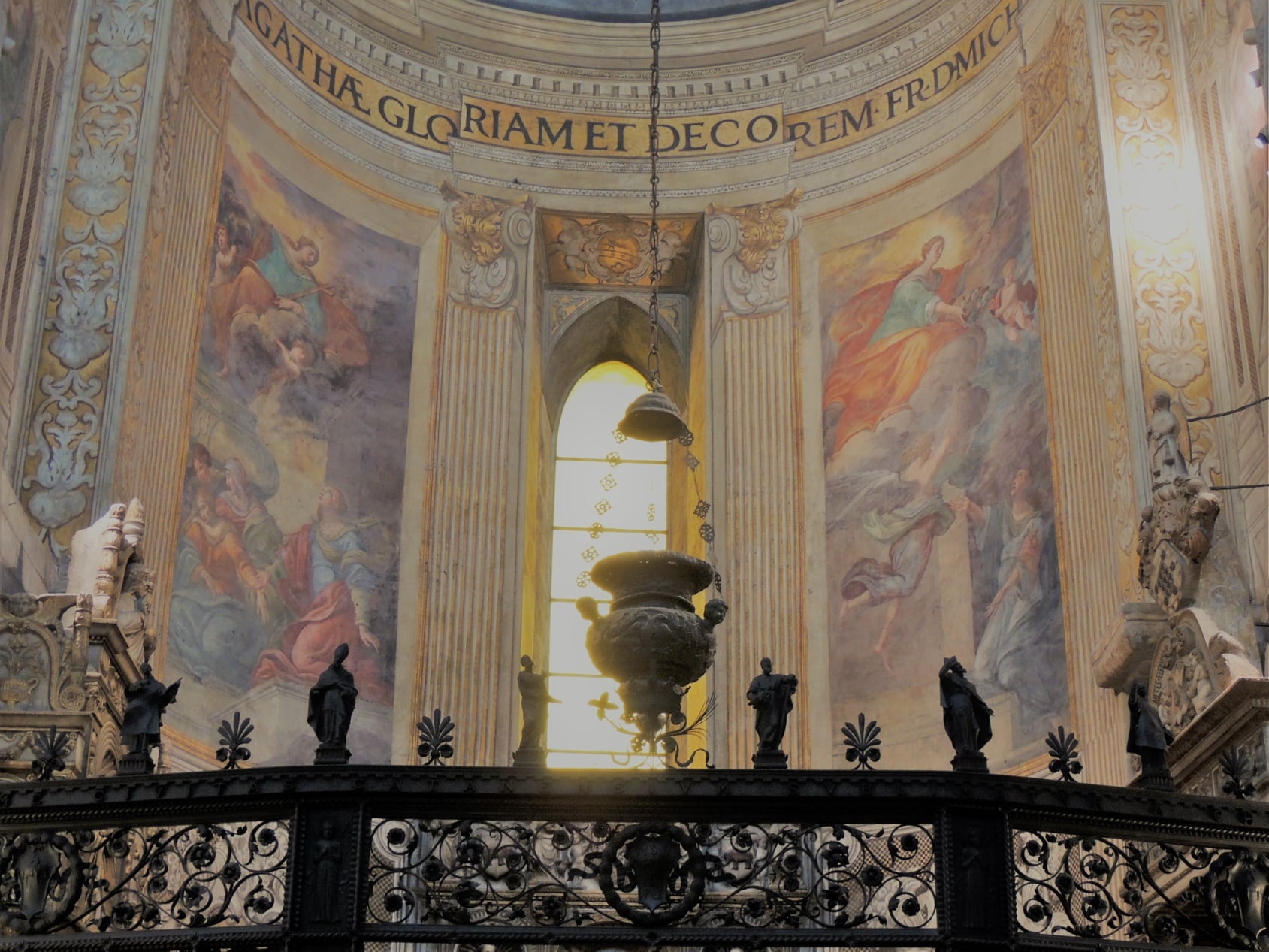
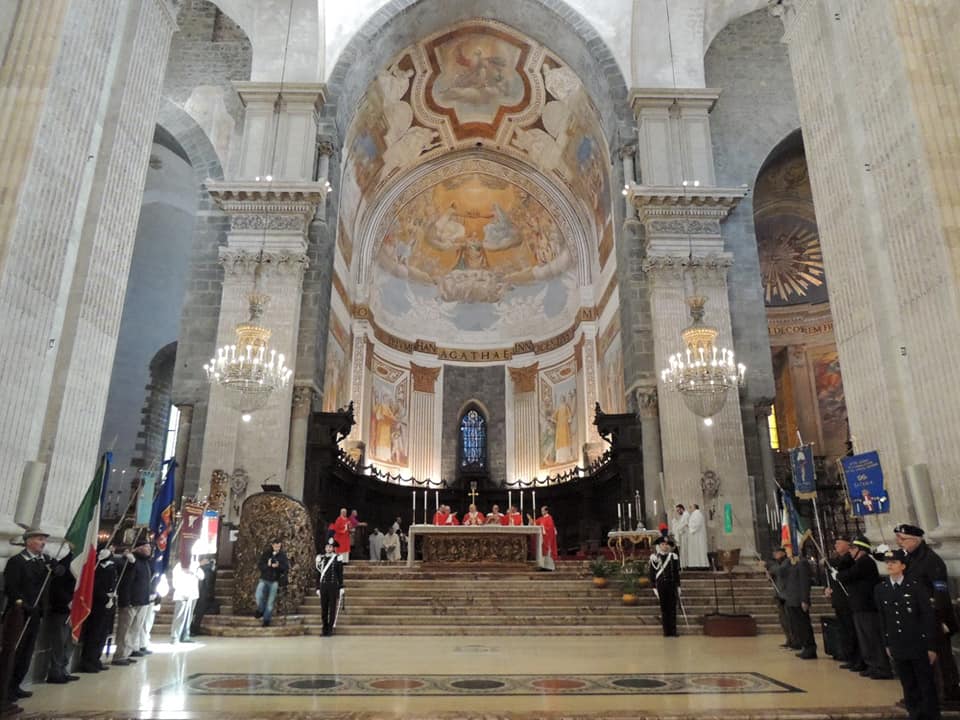
In the reconstruction, it was considered appropriate to resort to mighty pillars to replace the previous columns to support the roof, and also on this occasion, it was preferred to rebuild above the rubble by raising the floor by a further 40 cm. In the second half of the eighteenth century, it was decided to equip the building with a dome that emerged majestically from the Norman transept and excelled among the others in the city; Bishop Corrado Maria Deodato de Moncada entrusted this task to the architect Carmelo Battaglia who placed it on a high tambour lit by eight large windows. More

